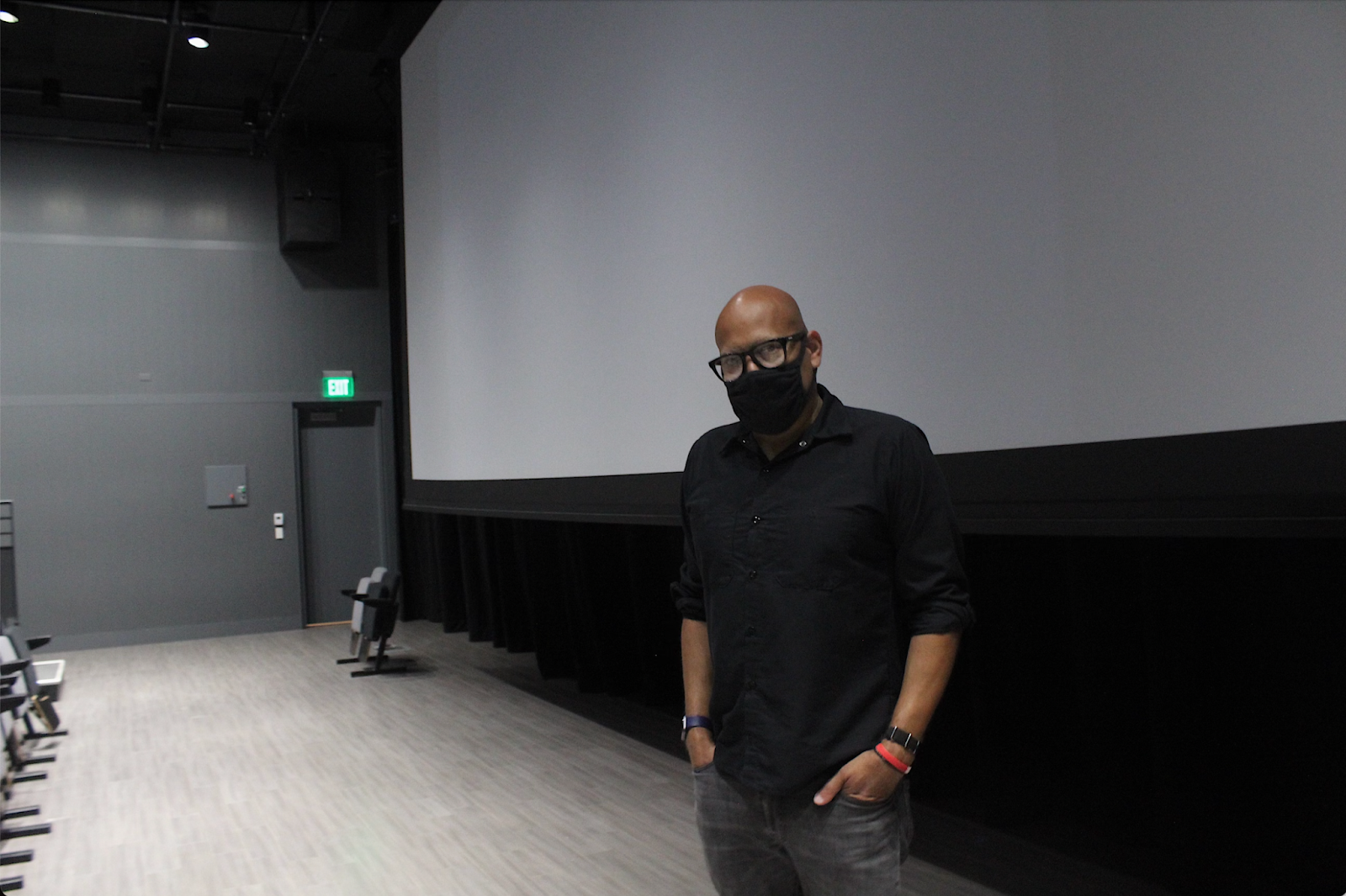The Department of Art & Art History hosted a film screening of “Tonsler Park” (2017) on Oct. 21, followed by a discussion with filmmaker Kevin Jerome Everson, which was facilitated by film and media studies associate professor Pavle Levi. The black-and-white 16mm film portrays Black poll workers upholding the democratic process on Nov. 8, 2016 in Charlottesville, Va.
The documentary follows poll workers’ tedious and repetitive labor, highlighting their dedication to upholding civic duty. The audience watches the meaningful work of Charlottesville poll workers as they collect ballots, verify identification, distribute stickers and assist voters.
“I like the minor character. I like making the invisible visible,” Everson said. “When you go to the grocery store, you don’t remember the checkout people, but I do, because these people are working hard. People always work hard, and a lot of people just don’t notice labor. They take labor for granted.”
In the film, the camera rests upon poll workers completing mundane tasks like filling out paperwork for minutes at a time, forcing the viewer to slow down and understand the effort and work that individuals undergo to serve our democracy.
“Everson’s cinema is the cinema of the people: of everyday folk, typically the working class, and their lived experiences,” Levi said. “Labor is explored in Kevin’s films as simultaneously a function of the human agent; a performance involving effort, skill and talent; and as an impersonal and automated process.”
Everson was inspired to create “Tonsler Park” after reflecting upon the long history of voter suppression in the United States. He recalls living in Cleveland, Ohio and encountering a tow truck waiting outside the polling station during school board elections. Because prospective voters had dirty license plates, they would avoid driving to the polls out of fear of towing, discouraging voter turnout.
“I remember seeing these older Black females out there trying to shoo away the tow truck drivers so people can vote,” Everson said. “These were the points of departure I was thinking about. I made films about labor before, but I wanted to start making films about civil servants.”
After moving to Charlottesville and seeing his voting poll in the Tonsler Park area of the city, Everson observed the poll’s Black workers and wanted to create a film centering their work as civil servants in American democracy.
“When I look through the viewfinder, I look at the backstory of these individuals,” Everson said. “We were stolen to get here, and now we get to protect what we think.”
When asked about the meaning of filming this work during the notable 2016 election, Everson made it clear that this documentary is not meant to be a specific commentary on the events of that year.
“It’s not the election, it’s an election,” Everson said, explaining that the film is intentionally timeless in its depictions of the long-standing labor of Black workers upholding democracy.
And yet, the context of 2016 is still meaningful, as Everson filmed this piece on Black democracy in Charlottesville just a year before the 2017 Unite the Right white supremacist rally in the same city.
Everson described the workers’ reactions to being included in the film. Much to the audience’s amusement, he explained that some of the people featured in his films don’t even watch the finished products.
“I’m not that self-centered thinking I’m the most important thing that happened to them that day,” Everson said. “I did have a screening in Charlottesville, and I don’t think none of the employees came, because it was two o’clock in the afternoon and people were at work.”
Production-wise, Levi asked Everson about the distinct formal choices he made when creating the film. In response, Everson explained that he started shooting with telephoto lenses when producing “Tonsler Park” to “flatten the space” after previously using wide angle lenses. Some stylistic decisions, like the black-and-white format, occurred due to simple logistics as Everson could not scout out the lighting of all his settings prior to filming.
Everson’s “approach to filming avoids naive, supposedly anti-formal observationalism, but neither is it assertively explanatory,” Levi said. “It’s a cinema that persists in occupying the intersection of experience and structure.”
